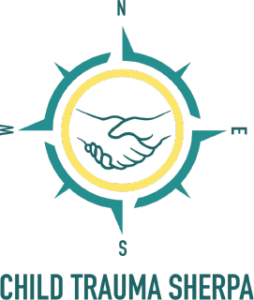Plus How You can Help Your Adopted Child with Trauma Heal
Childhood trauma is complex and emotionally turbulent for all involved. Unfortunately, many adopted children have experienced adverse childhood experiences (ACEs) that lead to childhood trauma. This exposure or repeated exposure to traumatic events has a real effect on the brain and can lead to development and behavioral issues.
Childhood Trauma is a Real Brain Injury
Childhood trauma causes an actual brain injury. How, you ask? Experiencing a massively traumatic event, such as a death in the family or being repeatedly exposed to traumatic events such as abuse and neglect by an authority figure, can have lasting impacts on how the body and brain function. These stressful events cause a person’s fight or flight instinct to kick in. Reliving these events, even over and over in our minds, can cause that fight or flight response to be on nearly all the time.
When our bodies enter fight or flight mode, we experience hormonal and physiological changes. This reaction begins in the amygdala, the part of your brain responsible for perceived fear. Unfortunately when you are constantly in this state, it can damage that part of your brain. This can have an effect on behavior, cause a regression or stagnation in child brain development and lead to feelings such as a mistrust or fear of authority figures, depression, anxiety, isolation and even forming unhealthy relationships.
A Deeper Dive on the Impact of Childhood Trauma on the Brain
Trauma leaves many scars. However, the brain is resilient and it is possible to heal from those effects. In order to help your child heal, you need to first understand the effects of childhood trauma. Let’s take a deeper look at some of those impacts your adopted child with trauma may be experiencing.
- Attachments and Relationships: Children with trauma often have trust issues, causing them to lash out in fear, isolate themselves, or even form unhealthy attachments.
- Physical Health: Constantly feeling stressed from being in fight or flight mode can lead to real physical health issues on the body and brain. It can diminish the immune system, cause heart pounding and rapid breathing, diminish brain development due to neglectful environments and a lack of mental stimulation, cause hypersensitivity to stimuli (noises, smells, light, etc.), or develop chronic pain or other chronic health conditions.
- Altered Emotional Responses: Children with trauma can express themselves most often in one of two ways: over-expressive or under-expressive. Over-expressive children will exhibit aggressive behaviors while under-expressive children with trauma will isolate themselves.
- Dissociation: When a child with trauma experiences an event that is terrifying or overwhelming, they may dissociate, or mentally separate themselves from the experience as a defense mechanism. This can affect their ability to be fully present and fracture their sense of time and continuity, which can lead to adverse effects on learning, classroom behavior and social interactions.
- Behavior: Your child with trauma may struggle with self-regulation (knowing how to calm down) and may lack impulse control or the ability to think through consequences before acting. This may lead your adopted child to act in unpredictable or extreme ways. Some children may also engage in risky behaviors. Others may dissociate and appear “spacey” and distant. It is also not uncommon for children with trauma to act several years younger than their age.
- Cognition: Children with trauma will experience cognition issues, including thinking clearly, reasoning and problem solving. They may be unable to plan ahead or anticipate the future. They may struggle academically, have deficits in language skills, and may be distracted by reactions to trauma reminders or triggers.
How You can Help Your Child Heal from Past Traumas
It is possible to heal from trauma! The brain is constantly healing itself up through the age of 25. However, it will take a lot of patience, love and support to help your adopted child with trauma heal. Left unaddressed, however, childhood trauma can have long-term health consequences, including conditions and high risk behaviors that can lead to chronic illnesses and even death.
- Offer Love and Support: The biggest thing you can do to help your adopted child with trauma begin to heal is to offer unconditional love and support and remind them of that love and support.
- Stability, Consistency and Predictability: Limit things that can cause anxiety and chaos. Provide structure to create a stable and consistent environment. Help your child dismantle uncertainty by setting expectations for certain situations to give them a greater sense of predictability. Also, offer stable, non-emotional responses to “bad” behaviors.
- Create a Safe Environment: Give your child a safe place by limiting conflict (e.g. take your argument with your partner to a private space) to avoid triggering or re-traumatizing your adopted child. Also give them the space to share feelings and thoughts without judgment.
- Support Network: Create a network of support from educators to family to medical professionals that will ensure continuity of care from one environment to the next. Everyone must be on the same page or little to no progress will be made.
- Professional Treatment: Consider seeking out professional treatment from a trauma-informed clinician. This will offer you and your child greater support and individualized care for your unique situation and needs.
Conclusion
While trauma can have lasting effects if not properly dealt with, it is possible to heal with love, patience and support. Creating a safe and loving environment for your adopted child will give them the space and time to heal by working through those past traumas, helping them learn to trust again. With time and consistency, you will begin to notice remarkable progress in your child’s development and behavior, allowing them to lead a full and happy life!


